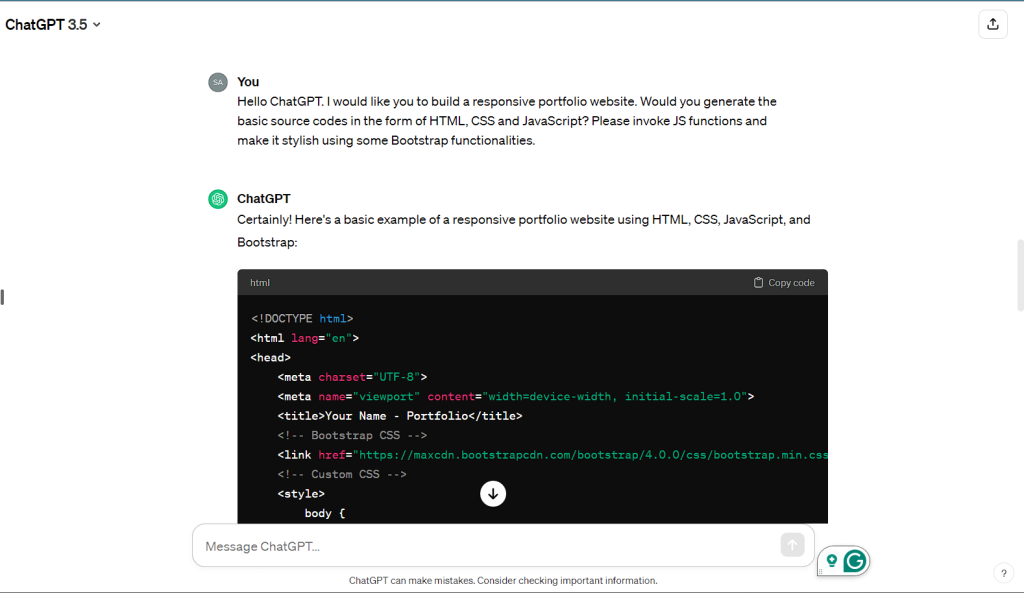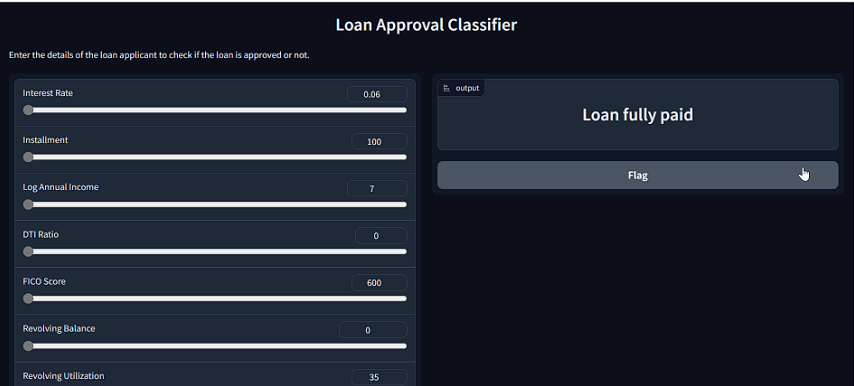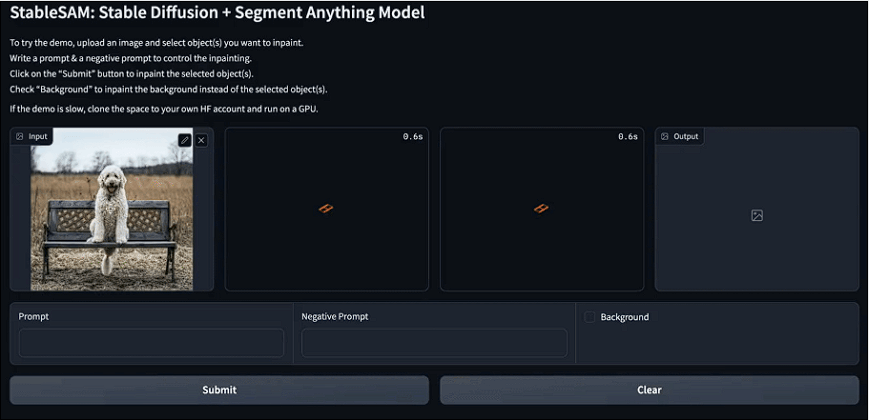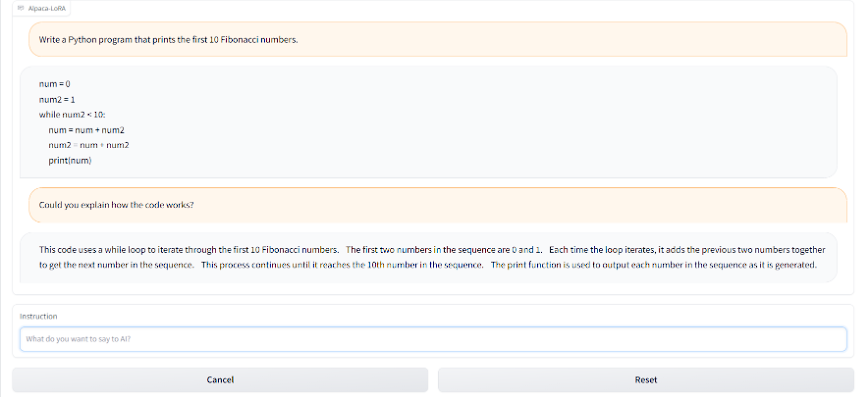Generative AI tools have taken the world by storm following their recent uprise in the technical market. Tools such as Anthropic’s Claude 3, Google’s Gemini 1.5 Pro, OpenAI’s GPT-4 Turbo Vision, and Mistral’s Mixtral 8x22B have made a huge impact following their recent updates.
They have made their way into almost every market sector starting from Medical, Finance, Security, Blockchain, Data Analytics, and much more. What better way to explore the latest breakthroughs in the world of Generative AI than exploring some great project ideas?
In the past few months, the job market has also been very competitive and it is getting more and more difficult to stand out amongst the competition. With the help of Gen AI projects, you will get to learn several skills which you can add to your resume. As a result you will attract recruiters and finally land your dream job.
With applications ranging from text synthesis to picture creation to artificial music composition, Generative AI technology has enabled engineers to produce remarkable models that can produce original ideas or content based on pre-existing patterns.
15 Amazing Gen AI Projects
Here are 15 impressive Generative AI projects that will help you showcase your skills and stand out from the crowd. Let’s check them out.
1. Personalized Voice Assistant
Have you ever been inspired by Google’s voice assistant and tried to program your own? Wouldn’t it be cool to ask it several questions and expect innovative answers? You could also command it to play music according to your moods and environment. The good news is with GPT-3 and Whisper API, this project is as good as done.
This project creates a simple voice assistant using Python. You will need OpenAI’s GPT-3 for language comprehension and response generation. Apart from this, you will need a Sound Device for recording audio and pyttsx3 for text-to-speech conversation.
To run this project you need to open Python 3.7 or higher. Once developed, the assistant will begin to listen to your orders. Your voice commands will be understood by the assistant. You can say “goodbye” to end the assistant’s work.
2. Analyze Research Papers
Final-year students who are struggling to find reference papers for your final year project, this may just be the solution for you! Imagine extracting specific relevant information from various research papers which can help save a lot of time. With this project, you can also summarize entire papers and generate insightful conclusions.
Recently Adobe released its own AI Assistant with a similar feature but as of now, it’s not freely accessible to many. Luckily you can also create your personalized documentation bot using LangChain and Sentence Transformers from HuggingFace. Below we have mentioned the steps for your reference.
- Load the PDF document using PyPDFLoader
- Extract chunks from the text
- Extract embeddings using the Sentence Transformer library
- Build the bot to answer questions
To involve the summarization feature you can develop an efficient web application using GPT-3, LangChain, and Streamlit. This will help automate the entire process. You can also integrate a query analysis process for multiple research papers, for this use LangChain and OpenAPI-API.
3. Code Documentation Tool
If you are a developer who is working everyday coding and debugging thousands of lines of code, this might be useful for you. Working as a developer in a coding team can be quite hectic as not only does it require scripting the code by itself but also explaining it to the whole team involved.
The explanation process becomes quite complex without code documentation which can help provide insights into loops and functions involved in several lines of code.
You can develop this application by utilizing the benefits of large language models which involves creating Python Docstring with ChatGPT.
4. Portfolio Website Creator
A portfolio website is one of the most basic and digitized projects one can have in his/her resume. Any developer looking to build an impressive profile must surely begin with one such website. However programming a portfolio website takes up a lot of skills and hard work as one needs to get a grasp of basic HTML, CSS, and JavaScript. To develop advanced and responsive websites one needs even more enhanced tools such as React and NodeJS.
But with this Generative AI project, you can readily say goodbye to this hassle. You can just ask questions to ChatGPT and describe your website outlines with all necessary sections and information. Imagine giving ChatGPT such a prompt and getting all the necessary source codes for the website development as a generated response.
“Hello, ChatGPT. I would like you to build a responsive portfolio website. Would you generate the basic source codes in the form of HTML, CSS, and JavaScript? Please invoke JS functions and make it stylish using some Bootstrap functionalities.”

Thus,ChatGPT will give you a basic outline of your desired portfolio website which you can further personalize and customize according to your needs.
5. AI Translator
As a developer, it must be a quotidian task to be involved with research papers and coding scripts in several international languages.
Often several developers have to give up a work or project idea because they failed to solicit information from its resources in an unknown international language that couldn’t be translated.
This project is an excellent idea to convert a source document, code, or tool in any language to your language of understanding. Hugging Face, which offers numerous models with specialized language translation capabilities, can be used to construct this application.
You can pick any sample model for translation and then use Streamlit to develop the translator application.
6. Review Sentiment Analysis
If you are looking to start your own online product business, this project may be quite beneficial for your company.
When a company launches a specific product out in the market, following weeks of its release the online platforms are flooded with customer reviews. It is crucial to have a tool that can help analyze the sentiments behind customer reviews and give the company an idea of how their product is performing in the market.
The first step in the application’s development is text preprocessing which is the most laborious task. This requires a good understanding of the language utilized. And further breaking down the text into smaller tokens. This next step is the word embedding process and can be managed quickly by utilizing the ChatGPT application.
Further, you can also involve any machine learning model and generate a list of pros and cons for each product review. You can also create a potential graph that shows the rise and fall of a product based on customer reviews analysis.
7. PowerPoint Presentation Automator
Nowadays almost every office-related work project or study presentations in schools and universities are made up of PowerPoint Presentations.
Developing a PowerPoint Presentation is quite a hectic task as it takes up a lot of time and requires to be highly skilled and adept with its use. Many fail to bring up their PPTs on time and even if they do, they lack quality and content.
Here you can use Generative AI to develop a smooth and efficient application to automate your PowerPoint Presentations. For this, you need to use Bing Chat to generate VBA codes for your PowerPoint slides. Remember you must mention and specify the context you need in every slide of your PowerPoint Presentation.
Source Code Video Demonstration:
8. Image Synthesis and End-to-End Translation
Starting with Google’s Gemini, almost every AI giant has started or will roll out the Image Generation feature, one of the most trending hot topics in the field of Generative AI.
The main idea of deploying an Image Generation tool is to use Deep Learning Techniques such as Generative Adversarial Networks (GANs) or Variational Autoencoders (VAEs).
These algorithms identify patterns, styles, and functions from large datasets of pre-existing photos to produce new visualizations. OpenAI’s DALL-E 2 is a great example of an image generation tool that you can use as a reference build.
You can also use GANs for image-to-image translation. The process of transforming an input image into an output image belonging to a different domain is known as image-to-image translation. For instance, we can change an image from daytime to nightfall or from black and white to color.
While the discriminator network learns to discern between the generated and actual images, the generator network learns to produce images that are comparable to the real images in the target domain. Together, these two networks can be trained to produce high-quality images that closely resemble the target domain. GANs and Convolutional Neural Networks (CNNs) are two of the methods used.
9. End-to-End Loan Approval Classifier Project
All you will need for this end-to-end data science project is access to the ChatGPT interface and a personal machine to run the code. We will discuss the dataset and our goals for it throughout the initial stage. Even though the responses aren’t always ideal, you can improve them by giving follow-up instructions.
We will request that ChatGPT produce Python code that loads the dataset and carries out exploratory data analysis using several visualization methods. It can even be asked to interpret the outcomes for you. You will need to ask ChatGPT for a feature engineering code. It will create one from the existing features. This signals that the AI fully understands the dataset.
Next, we will use ChatGPT to build preprocessing and class balancing code for our unbalanced dataset. You will need to request ChatGPT to develop the code for model selection by providing the machine-learning models. We will choose the model that performs the best after running the code.
You will ask ChatGPT to write Python code for hyperparameter adjustment and model evaluation to increase performance and save the model that performs the best. We will instruct ChatGPT to use the preprocessed and saved model to construct the Gradio app code. The input features and output results will be grasped by the AI. You will end up with a fully functioning website.

At the final step, you can ask ChatGPT for steps to deploy the web app on spaces.
10. Stable Diffusion Inpainting with Segment Anything
In this project, you will build an app that can alter the background, face, clothes, or anything else you choose using Gradio, Hugging Face diffusers, and Meta’s segment-anything feature. All it needs is the prompt, the image, and the chosen location.
The first step is to establish a Stable Diffusion. Diffuser and model weights are available on Hugging Face. Hugging Face is used in the inpainting pipeline. We will then include it in “cuda” for GPU acceleration after that.
The image mask feature will be important for identifying user faces and performing the necessary operations on them. You will need the SAM Predictor for this feature. Construct a masked picture and segmentation, it requires an image, a selected image region, and the boolean value is_backgroud. Next, the inpainting function modifies certain areas of the photos using the Stable Diffusion Inpainting pipeline. Input picture, masked image, segmented image, prompt text, and negative prompt text are needed for the pipelines.
After making a row, you will add three picture blocks. You must include another row with a submit button to create a minimally viable product. Next, to execute the inpainting function, you must alter the input picture object to choose pixels, create a mask and segmentation, and add an action to the submit button. You will need Gradio for this.
Hugging Face offers the enhanced version of the project, which comes with a specially designed ControlNet-based inpainting pipeline. Rather than Stability AI, it makes use of Runway ML Stable Diffusion Inpainting. This is how the final version of the Application will look like.
This is what the final version of your project application will look like.

11. Alpaca-LoRA: Build ChatGPT-like with Minimal Resource
All the parts you need to build your own customized ChatGPT-like chatbot with a single GPU are included in the Alpaca-LoRA. Isn’t it wonderful to create your chatbot like ChatGPT and utilize it for your own needs?
This is how you can do the local setup:
- Clone repository: tloen/alpaca-lora
- Install dependencies using pip install -r requirements.txt
- If bitsandbytes doesn’t work, install it from the source.
For training, we will examine the fine-tuning script that may be used with the cleaned Stanford Alpaca model to run on the LLaMA model.
To improve performance, you can adjust the hyperparameters by looking at the repository.
python finetune.py \
--base_model 'decapoda-research/llama-7b-hf' \
--data_path 'yahma/alpaca-cleaned' \
--output_dir './lora-alpaca'
The Gradio interface is operated by the inference script, which loads LoRA weights after reading the foundation LLaMA model from Hugging Face.
python generate.py \
--load_8bit \
--base_model 'decapoda-research/llama-7b-hf' \
--lora_weights 'tloen/alpaca-lora-7b'
Alternatively, you can use alpaca.cpp to run alpaca models on a Raspberry Pi 4 with 4GB of RAM or a CPU. Additionally, as demonstrated below, you may utilize Alpaca-LoRA-Serve to provide an interface similar to ChatGPT.

12. Deep Reinforcement Learning for Game Generation
You can investigate deep reinforcement learning methods in Python to create a system that creates new video game levels and scenarios on its own, improving the gameplay experience.
For this project, you can integrate GVGAI into the OpenAI Gym environment, which is a popular platform for integrating agents with reinforcement learning tasks. Then you can evaluate the performance of popular implementations of several deep reinforcement learning algorithms on various GVGAI games by using this interface.
A Reinforcement Learning (RL) agent learns through trial-and-error interactions with a dynamic environment and balances the reward trade-off between long-term and short-term planning. RL methods have been widely studied in many disciplines, such as operational research, simulation-based optimization, evolutionary computation, and multi-agent systems, including games. The cooperation between the RL methods and Deep Learning (DL) has led to successful applications in games
A method for benchmarking AI algorithms on a large number of games written in a domain-specific description language is made possible by the General Video Game AI (GVGAI) competition and its related software platform. Although this idea is a theory in itself it is still being researched and you can use it to develop your game character and levels.
For reference refer to this Research
13. Personalized Content Generation for E-commerce
By developing a sophisticated AI system that provides individualized product recommendations, descriptions, and even product photographs for online buyers, this project seeks to completely transform the online shopping experience. Based on the user’s surfing history, product choices, and demographic data, these recommendations will be made.
For this project, user information will be gathered via demographics, wish lists, and past browsing and purchase activity. Detailed user profiles are produced by sophisticated profiling algorithms. Personalized content is created utilizing NLP models such as GPT-4, which are trained on a variety of product data and adjusted with user profiles. Computer vision models also comprehend product images concurrently.
Dynamic content creation, which includes suggestions, descriptions, and photos, is informed by real-time analysis. An engaging and personalized e-commerce experience is ensured by privacy safeguards, scalability, feedback loops, UI integration, and continuous optimization.
14. Dynamic Advertising Campaigns
By creating an AI-powered platform for advertisers, this project seeks to transform the advertising sector. Ad creatives and copy are generated dynamically by the platform, which then optimizes them in real-time to fit various audience segments and platforms.
You will use machine learning algorithms that examine user behavior and preferences across digital platforms to develop dynamic advertising campaigns. Real-time, automatic production of customized ad creatives and copy is informed by these insights. The most successful ad variations are found through A/B testing.
The technology optimizes content for many platforms by utilizing performance measures such as ROI and CTR. User engagement and advertising performance are improved by rigorous data privacy compliance and ongoing incorporation of user feedback.
15. Super-Resolution using SRGAN
The term “super-resolution” describes the process of raising an image’s resolution. For this objective, Super-Resolution Generative Adversarial Networks (SRGANs) can be applied.
A discriminator network plus a generator network makes up an SRGAN. While the discriminator network learns to discern between the created images and the actual high-resolution photos, the generator network learns to generate high-resolution images from low-resolution input images.
Together, these two networks can be trained to produce high-resolution, high-quality images. The methods used are CNNs and GANs.
Conclusion
A thorough and crystal-clear understanding of vast AI concepts and tools mentioned above in the project is highly required for the implementation of the projects. To guarantee that your AI systems deliver genuine business value, you should concentrate on data collection, model training, continuous learning, and user input integration to execute these projects successfully.
Furthermore, ethical and data privacy must be followed in every AI project. Learning the skills and tools associated with the projects will also help you build up your resume and enhance your career path in the fields of Machine Learning and Artificial Intelligence. So go try out these projects today and strengthen your resume to land your dream job!








